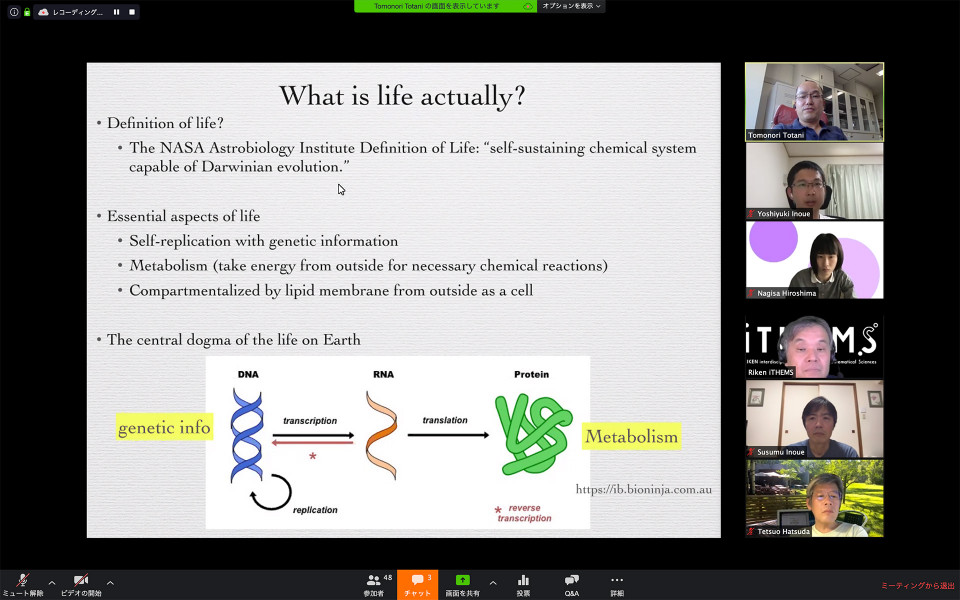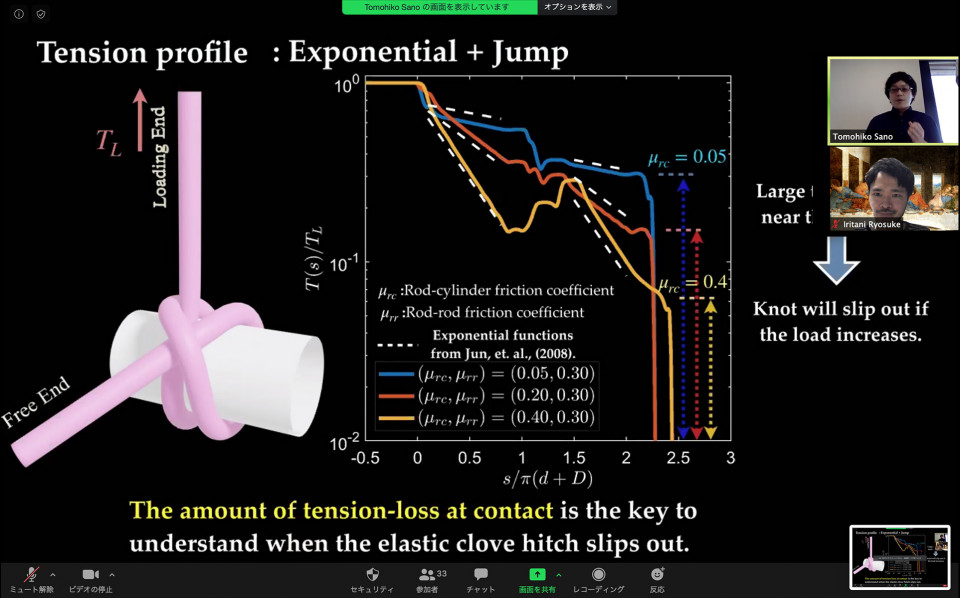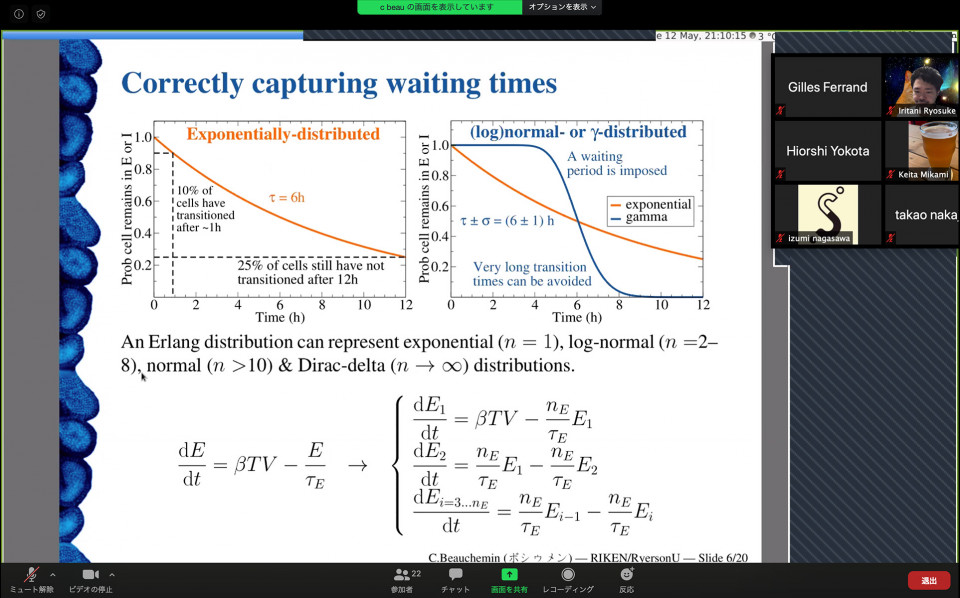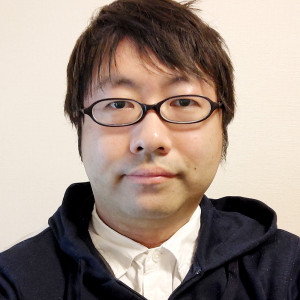Volume 103
Back to Newsletter List
Seminar Report
Totani’s Equation: Abiogenesis probability in an inflationary universe
2020-05-12
Abiogenesis is the natural process by which life has arisen from non-living matter. Understanding of abiogenesis can tell us one of the most fundamental questions in natural science: “Why are we here?”. However, abiogenesis probability is believed very very low to have us, life, in the universe considering the formation of a long enough polymer having a correct nucleotide sequence by random reactions. Sometimes, this probability is quoted as “Can a monkey hitting a keyboard at random type a complete work of Shakespeare?”. On 11 May 2020, we had iTHEMS Colloquium inviting Prof. Tomonori Totani from the University of Tokyo, with the title of “Emergence of life in an inflationary universe.” Prof. Totani is a renowned professor in astrophysics working on high energy astrophysics and cosmology. As a cosmologist, he visited this abiogenesis issue. Cosmologists believe that the universe created by inflation should extend far beyond the observable universe (13.8 billion light-year radius). Combining the knowledge of this inflationary universe and the RNA formation processes, he provided a new equation describing the abiogenesis probability in an inflationary universe. This new equation showed that, as the inflationary universe contains a large number of stars, it may provide sufficiently many abiogenesis events, even if we consider only the basic random polymerization. However, following his equation, regrettably, we may expect no “aliens” in our universe. Let’s see the results of future telescopes’ search of a second Earth.
Emergence of life in an inflationary universe
May 11 (Mon) 15:30 - 17:00, 2020
Seminar Report
Third virtual Biology Seminar on May 7, 2020
2020-05-08
On 7 May, Dr. Tomohiko Sano, from École polytechnique fédérale de Lausanne in Switzerland, gave a talk at the 3rd iTHEMS Biology Seminar. In this seminar, Dr. Sano talked about the results of his research on how physical actions in knots occur. It has been empirically known that hitch knots and other knots cannot be untied, but how they work has not been well understood. Dr. Sano explained that he had clarified them through experiments and simulations. Since there are various knots in the three-dimensional structures of DNA and proteins in cells, We felt that Dr. Sano's research could be applied to various structural problems in molecular biology.
Slip or (k)not: Geometry and mechanical performance of physical knots
May 7 (Thu) 17:00 - 17:45, 2020
Seminar Report
Biology Seminar by Dr. Catherine Beauchemin on May 13, 2020
2020-05-13
Catherine talked about her general approach for formalizing and quantifying the principle of virological dynamics, namely “virophysics.” She first presented compartmental models to generalize the probability distribution of sojourn time of cells being infective, with parameter estimation in flu data using MCMC, and then talked about COVID-19 modeling and its predictability. I was honestly surprised that increasing the number of compartments can readily change the distribution, and found it promising to apply her approach to not only virology but ecology and evolution as well. Thank you, Catherine, for the great talk!
- Ryosuke Iritani
Models to describe how virus spreads in vitro
May 13 (Wed) 10:00 - 10:45, 2020
Upcoming Event
Seminar
QFT-core Seminar
Gradient Flow Equation and Its Applications
May 15 (Fri) 13:30 - 15:00, 2020
Kengo Kikuchi (Special Postdoctoral Researcher, RIKEN Interdisciplinary Theoretical and Mathematical Sciences Program (iTHEMS))
Gradient flow is the one of the methods to suppress the ultraviolet divergence in gauge theories. The any correlation functions in terms of the flowed field, which is defined by the gradient flow equation, are finite without additional renormalizations. Because of this surprising property, the methods has been studied widely, especially in the lattice field theory.
In this seminar, we introduce what the gradient flow is briefly. And we show our work, “generalized gradient flow equation”, which is the gradient flow equation for field theories with nonlinearly realized symmetry. Applying the formalism to a supersymmetric theory and O(N) non linear sigma model, we obtain the SUSY gradient flow and the Large N gradient flow.
We also refer to the current research, the gradient flow of the supersymmetric theory with the non-renormalization theorem and the new formalism to obtain the sphalerons, which is one of the static classical solutions, using gradient flow methods, if time allows.
Venue: via Zoom
Event Official Language: English
Paper of the Week
Week 3 of May
2020-05-14
Title: Cosmological Evolution of Flat-Spectrum Radio Quasars based on the {\it Swift}/BAT 105-month Catalog and Their Contribution to the Cosmic MeV Gamma-ray Background Radiation
Author: Koyo Toda, Yasushi Fukazawa, Yoshiyuki Inoue
arXiv: http://arxiv.org/abs/2005.02648v1
Title: Vector Fields and Paul Klee -- A Summer School Course for gifted High-School Students
Author: Martin Skrodzki, Henriette Lipschütz
arXiv: http://arxiv.org/abs/2005.01983v2
Title: Family-Vicsek Scaling of Roughness Growth in a Strongly Interacting Bose Gas
Author: Kazuya Fujimoto, Ryusuke Hamazaki, Yuki Kawaguchi
arXiv: http://arxiv.org/abs/1911.10707v2
Title: Partial Deconfinement at Strong Coupling on the Lattice
Author: Hiromasa Watanabe, Georg Bergner, Norbert Bodendorfer, Shotaro Shiba Funai, Masanori Hanada, Enrico Rinaldi, Andreas Schäfer, Pavlos Vranas
arXiv: http://arxiv.org/abs/2005.04103v1
Title: Firewall From Effective Field Theory
Author: Pei-Ming Ho, Yuki Yokokura
arXiv: http://arxiv.org/abs/2004.04956v2
Title: Link-homotopy classes of 4-component links and claspers
Author: Yuka Kotorii, Atsuhiko Mizusawa
arXiv: http://arxiv.org/abs/1910.08653v4
Title: F_K / F_π from Möbius Domain-Wall fermions solved on gradient-flowed HISQ ensembles
Author: Nolan Miller, Henry Monge-Camacho, Chia Cheng Chang, Ben Hörz, Enrico Rinaldi, Dean Howarth, Evan Berkowitz, David A. Brantley, Arjun Singh Gambhir, Christopher Körber, Christopher J. Monahan, M. A. Clark, Bálint Joó, Thorsten Kurth, Amy Nicholson, Kostas Orginos, Pavlos Vranas, André Walker-Loud
arXiv: http://arxiv.org/abs/2005.04795v1
If you would like to cancel your subscription or change your email address,
please let us know via our contact form.
Copyright © iTHEMS, RIKEN. All rights reserved.







